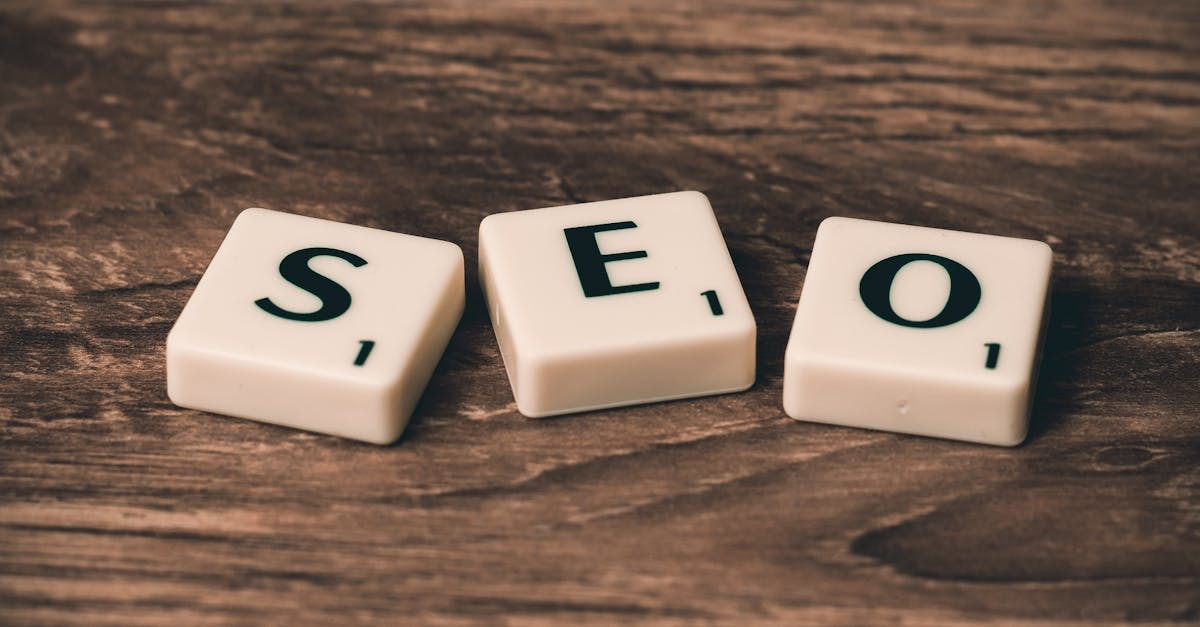
Table Of Contents
Amazon Advertising
Amazon Advertising has rapidly become a significant player in the world of digital marketing, particularly for those operating in e-commerce. This platform provides various options for sellers to promote their products through targeted ads. By leveraging the vast consumer base and insights derived from user behaviour, Amazon enables businesses to connect with potential buyers at crucial decision-making moments.
Pay-Per-Click (PPC) Advertising on Amazon operates on a bidding system where advertisers pay only when a user clicks their ad. Advertisers can choose from options such as Sponsored Products, Sponsored Brands, and Sponsored Display, each offering different benefits to cater to diverse marketing strategies. This flexibility makes it easier for sellers to optimise their campaigns according to specific goals, whether that involves boosting visibility, increasing sales, or building brand awareness.
Effectiveness of PPC for Ecommerce on Amazon
Pay-Per-Click (PPC) Advertising on Amazon has proven to be a formidable tool for driving sales in the e-commerce landscape. Merchants benefit from precise targeting, enabling them to connect with potential customers actively seeking their products. This targeted approach helps in maximising return on investment (ROI), as advertisers can direct their efforts towards users already interested in making a purchase. Campaigns can be tailored based on keywords, product categories, and user behaviour, ensuring a higher level of engagement.
The effectiveness of PPC on Amazon also extends to enhancing visibility and brand awareness. Products that appear in sponsored placements have a greater chance of standing out, which is essential in a crowded marketplace. This increased visibility not only attracts clicks but also cultivates trust and credibility among consumers. As sellers leverage Pay-Per-Click Advertising, they can gain valuable insights through analytics, refining their strategies and improving their offerings to further capture the attention of shoppers.
Retargeting and Remarketing Strategies
Retargeting and remarketing strategies are essential components of a successful digital marketing campaign, particularly in the context of Pay-Per-Click (PPC) Advertising. These approaches involve targeting users who have previously visited a website or engaged with an ad but did not complete a desired action, such as making a purchase. By keeping the brand in front of these potential customers, businesses can significantly increase their chances of conversion and recover lost sales opportunities.
Utilising data from previous interactions, marketers can tailor their messaging and offers to resonate more effectively with these audiences. The ability to segment users based on their behaviour allows for highly personalised ad experiences, enhancing the likelihood of re-engagement. This targeted approach not only optimises ad spend in Pay-Per-Click (PPC) Advertising but also fosters a sense of familiarity and trust, guiding the user back towards a final purchasing decision.
How PPC Enhances Retargeting Efforts
Pay-Per-Click (PPC) Advertising serves as an essential tool for enhancing retargeting efforts within digital marketing. This strategy allows businesses to reconnect with users who have previously engaged with their website or products. By displaying tailored ads to these users as they browse other platforms, PPC can effectively remind them of their earlier interest. Such reminders can significantly increase the chances of conversion, as these potential customers are already familiar with the offerings.
Moreover, businesses can use PPC to segment their audience based on specific behaviours or interactions. Customising campaigns to reach these segments can lead to a more efficient ad spend. By targeting users who viewed particular products or abandoned their shopping carts, companies can deliver personalised messages that resonate with their audience's past actions. This not only improves engagement rates but also enhances the overall effectiveness of retargeting campaigns, allowing for a more agile approach in reclaiming lost sales.
Cost Analysis of PayPerClick Advertising
Pay-Per-Click (PPC) Advertising serves as a crucial element in digital marketing strategies, particularly for businesses looking to maximise their online visibility. The costs associated with PPC vary significantly based on platform, industry competition, and targeted audience. Understanding these variables is vital for businesses, as they need to establish an effective budget that aligns with their marketing goals. Many advertisers start with a set daily budget, allowing for flexibility in their campaigns while keeping expenses manageable.
To optimise spending, it is essential to comprehend bidding strategies within the PPC framework. Advertisers can choose between manual bidding or automated options, each offering different levels of control over costs. The success of a PPC campaign is often measured by its return on investment (ROI). Businesses that monitor their advertising spend closely can adjust their approaches based on which keywords and ads yield the best results, ultimately helping to refine their strategies and allocate resources more effectively.
Understanding Bids and Budgeting
Bids play a crucial role in the mechanics of Pay-Per-Click (PPC) Advertising. Advertisers set a maximum amount they are willing to pay for each click on their ad, which influences the ad's position on the search result pages. Higher bids can lead to better placements, but it's essential to balance bidding with potential returns on investment. Focusing on keywords that drive relevant traffic can lead to effective spending, ensuring that each click adds value to the overall marketing strategy.
Budgeting for PPC campaigns involves allocating funds effectively across various segments to maximise results. Advertisers often set daily or monthly budgets to control expenditures while ensuring consistent visibility. Regularly reviewing performance metrics allows for adjustments, enhancing the effectiveness of the investment. By analysing which keywords and ads yield the best return, businesses can optimise their bids and budgets for continual improvement in their Pay-Per-Click (PPC) Advertising efforts.
FAQS
What is pay-per-click (PPC) advertising?
Pay-per-click (PPC) advertising is an online marketing model where advertisers pay a fee each time their ad is clicked. It is commonly used to drive traffic to websites and can be a highly effective way to generate leads and sales.
Which platform is the most used for PPC advertising?
Google Ads is generally considered the most used pay-per-click platform globally, as it offers extensive reach and a variety of ad formats. However, platforms like Amazon Advertising have gained substantial popularity, especially for e-commerce businesses.
How does Amazon Advertising differ from Google Ads?
Amazon Advertising is primarily focused on e-commerce, allowing sellers to promote their products directly on the Amazon platform. In contrast, Google Ads enables advertisers to promote across various sites in the Google Display Network and within search engine results, catering to a broader range of industries.
What are retargeting and remarketing in PPC advertising?
Retargeting and remarketing refer to strategies that allow advertisers to show ads to users who have previously interacted with their website or ads. This approach aims to re-engage potential customers and increase conversion rates.
How can I effectively budget for PPC campaigns?
Effective budgeting for PPC campaigns involves understanding your business goals, estimating the cost per click in your industry, setting daily or monthly budgets, and continually monitoring and adjusting your bids based on performance metrics to maximise return on investment.

















































